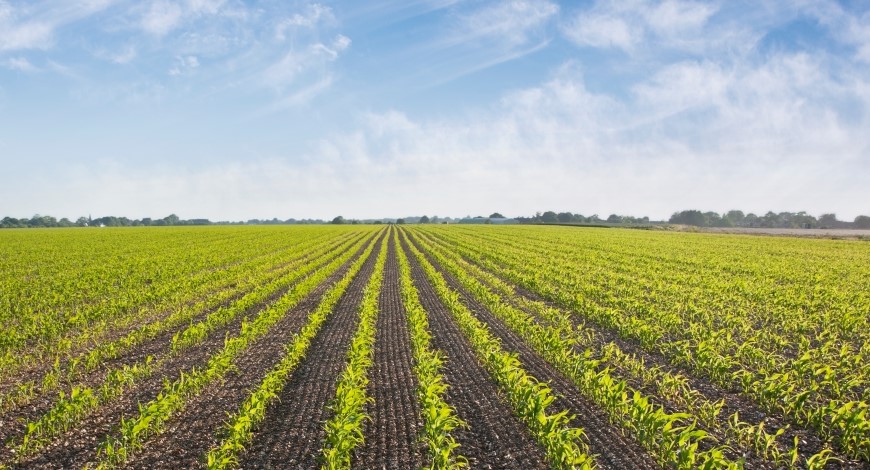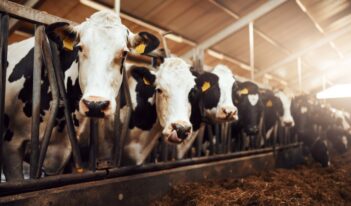
Contaminated agricultural water is a well-known root cause of foodborne illness that regulators have struggled to address.
Foodborne illness caused by contaminated agricultural water is a significant problem. Although Congress has mandated that the U.S. Food and Drug Administration (FDA) specifically address the issue, the agency has struggled to find a sufficient scientific basis to justify determinate water quality standards for farming. The U.S. Supreme Court’s administrative law decisions issued this summer are likely to make matters worse. We need innovative regulatory approaches that would reduce harm in the short term while generating the scientific evidence necessary to support long-term solutions.
Recurrent foodborne illness outbreaks have alerted federal regulators to the presence of harmful microbial pathogens in irrigation water used to cultivate fresh produce. The problem has become so bad that contaminated fruits and vegetables are now the leading cause of foodborne illness in the United States. According to one estimate, tainted leafy greens alone cause 2.3 million acute illnesses every year at an annual economic cost of $5.2 billion.
Because using potable water to irrigate crops would be prohibitively expensive, growers are forced to rely on water from rivers, canals, and wells—all of which are vulnerable to potential contamination by wild animals and livestock. Investigations of several high-profile outbreaks involving leafy greens have identified the escape of manure from nearby cattle feeding operations into irrigation canals as one source of contamination.
The problem is not new. As far back as 1997, industry guidelines identified microbial contamination of agricultural water from livestock as a significant human health hazard. Following decades of lobbying by consumer advocacy groups demanding a federal regulatory response, the Food Safety Modernization Act, signed by President Barack Obama in 2011, mandated that the FDA establish “science-based minimum standards” for agricultural water quality within two and a half years. However, the agency has struggled to comply with this mandate.
From the outset, the FDA has searched in vain for a scientific basis to justify quantitative minimum standards. After missing the statutory deadline, the agency was successfully sued by consumer advocacy organizations and finally published a Produce Safety Rule in November of 2015. The rule incorporated plans to phase in compliance with quantitative agricultural water quality thresholds and testing requirements between 2019 and 2021, depending on the size of the farm. In 2019, the agency delayed initial enforcement of the rule until 2022. Then, in 2021, the agency proposed replacing its quantitative water quality thresholds and testing requirements with qualitative pre-harvest agricultural water quality assessments. Last month, the FDA published a revised final rule on agricultural water.
The new rule does not mandate minimum water quality standards. Instead, it requires growers to conduct annual assessments to identify any conditions that are “reasonably likely to introduce known or reasonably foreseeable hazards.” It also requires them to “determine whether measures are reasonably necessary to reduce the potential for contamination” and to ensure that agricultural water is “safe and of adequate quality for its intended use.”
The regulations direct growers’ attention to factors that may affect the microbial quality of agricultural water—such as the location and nature of the water source, the method of application, crop characteristics, and climatic conditions. If growers determine that their agricultural water is “not safe or is not of adequate sanitary quality for its intended use,” then they are required to “make necessary changes and take adequate measures to determine if the changes were effective.”
Throughout this process, the FDA has found itself between a rock and a hard place. On the one hand, federal law requires that the agency establish science-based minimum standards for agricultural water. An initial failure to do so subjected the agency to a court order compelling compliance. On the other hand, the consensus among experts is that no scientific evidence exists to support specific quantitative thresholds for agricultural water quality. Scientists have yet to develop reliable methods for measuring the microbial quality of agricultural water or for estimating the transfer rates of pathogens from water to crops and the resulting pathogen exposure of consumers. Moreover, scientists lack dose-response data that would enable regulators to calculate safe levels of pathogen exposure.
Although scientific evidence that microbial contamination of agricultural water is hazardous to human health is robust and expanding, this scientific evidence is insufficient to reliably quantify the impact of various levels of water quality on the incidence of foodborne illness. Faced with an irresolvable dilemma, the agency has opted for a rule that merely highlights potential sources of contamination and encourages growers to exercise reasonable care.
What more can be done?
Going forward, regulators should prioritize verifiable harm reduction measures that generate new policy-relevant information, which might eventually support more determinate agricultural water quality standards. For example, recent advances in public health surveillance and outbreak investigation have enabled regulators to identify outbreaks more promptly. By issuing consumer warnings and removing contaminated products from store shelves earlier in the life cycle of an outbreak, these advances have reduced the number of victims per outbreak. At the same time, better surveillance and investigation generates data that may one day allow regulators to link specific food safety precautions on farms to quantifiable public health benefits.
In addition, regulators should look beyond the farm for solutions. For example, food processors can use post-harvest remediation to kill pathogens. Although the current practice of washing with chlorinated water has proven inadequate to sanitize contaminated produce, technological innovations using radiation, ozone gas, ultraviolet and blue light, and cold plasma may eventually provide a kill-step in the post-harvest production process capable of cost-effective pathogen neutralization.
Regulators should also consider strategies aimed at preventing the contamination of agricultural water by cattle operations in the first place. Recent field trials have demonstrated that vaccinating herds dramatically reduces the number of cattle that shed pathogenic E. coli and the fecal bacterial concentration of those that do. Other studies have shown that supplementing feed with probiotics or various foods—such as orange peel, cotton seed, and seaweed—also reduces pathogen shedding.
Putting these measures into practice will not be easy. Public health surveillance and outbreak investigation are expensive, and there is no indication that Congress currently has an appetite for significant new appropriations to fund food safety. Innovative technologies require industry adoption and consumer acceptance, which takes time. Most difficult of all may be measures aimed at cattle operations. The beef and dairy industries have shown little enthusiasm for additional regulation. They have effectively lobbied against legislation that would allow the FDA to test for outbreak pathogens on ranches during investigations, and industry lawyers mounted successful legal challenges to attempts to strengthen existing regulations governing the discharge of manure into waterways.
Finally, the U.S. Supreme Court’s conservative supermajority has issued a series of administrative law opinions—including the recently decided cases of Loper Bright Enterprises v. Raimondo and Ohio v. EPA—that afford less policymaking discretion to agency officials and that empower federal courts to second-guess the adequacy of agency experts’ scientific analysis. These decisions threaten to hamstring FDA officials as they struggle to fulfill their statutory mandate to implement quantitative science-based agricultural water quality standards.
Unfortunately, for the foreseeable future, the contamination of agricultural water is likely to remain a formidable challenge for regulators and a persistent root cause of foodborne illness.
This essay is adapted from the author’s article, “Known Unknowns: Unmeasurable Hazards and the Limits of Risk Regulation,” published in the Oklahoma Law Review.




